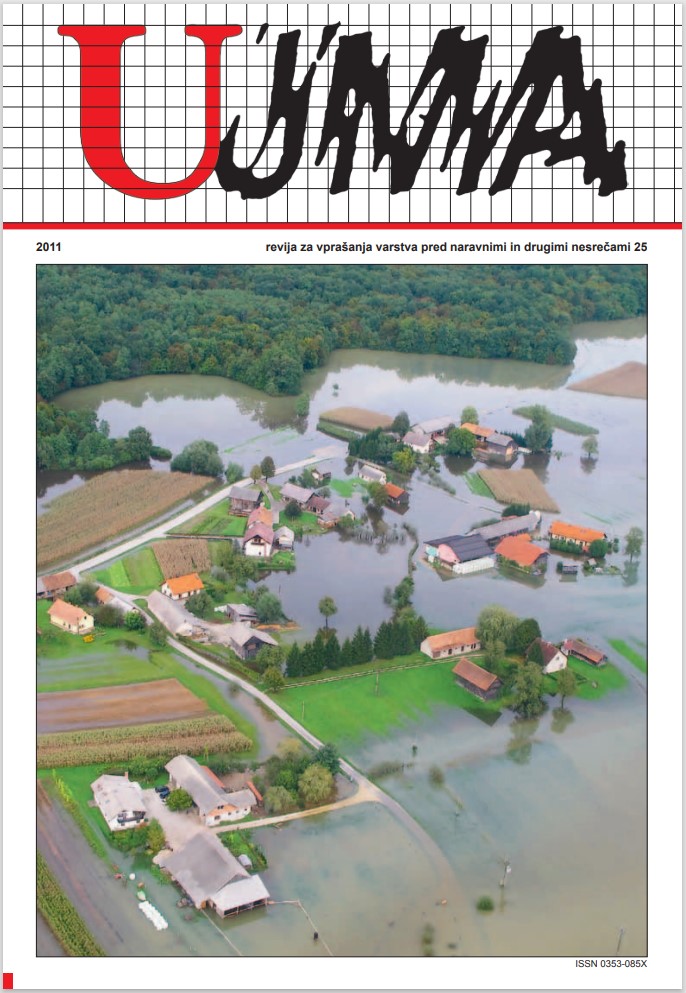EARTHQUAKE PRECURSORS – OVERVIEW OF OBSERVATIONS AND EXPLANATORY MODELS
Abstract
Although short-term prediction of earthquakes is not possible and most likely will not be possible for quite some time, earthquake precursors are intensively studied across the whole world. The most important precursors which fulfil the criteria of credible observations and existence of explanatory models are changes in electric and magnetic fields, gas emissions, groundwater level changes, temperature changes, surface deformations and anomalous seismicity. The largest amount of data is available for gas emissions (especially changes in concentration of radon), following the anomalies in electric and magnetic fields, and groundwater level changes. In this article an overview of published observations is given as well as anomalies on the magnitude of the earthquakes, epicentral distance and their time course. For each phenomenon, physical or chemical models are given.
References
Cicerone, R. D., Ebel, J. E., Britton, J., 2009. A systematic compilation of earthquake precursors, Tectonophysics, 476, 371–396.
Fenoglio, M. A., Johnston, M. J. S., Byerlee, J. D., 1995. Magnetic and electric fields associated with changes in high pore pressure in fault zones: application to the Loma Prieta ULF emissions. Journal of Geophysical Research, 100, 12951–12958.
Fraser-Smith, A. C., Bernardi, A., McGill, P. R., Ladd, M. E., Helliwell, R. A., Villard Jr., O. G., 1990. Low- -frequency magnetic field measurements near the epicenter of the Ms 7.1 Loma Prieta earthquake. Geophysical Research Letters, 17, 1465– 1468.
Geller, R. J., 1997. Earthquake prediction: a critical review. Geophysical Journal International, 131, 425–450.
Ghos, D., Deb, A, Sengupta, R., 2009. Anomalous radon emission as precursor of earthquake. Journal of Applied Geophysics, 69/2, 67–116.
Johnston, M. J. S., 2002. Electromagnetic fields generated by earthquakes. V: Lee in sod.: International Handbook of Earthquake & Engineering seismology, 621–635, Academic Press.
Lapajne, J., 1990. Napovedovanje potresov – I. Ujma, 4, 67–71.
Lapajne, J., 1991. Napovedovanje potresov – II. Ujma, 5, 186–189.
Lapajne, J., 1992. Napovedovanje potresov – III. Ujma, 6, 220–222.
Lomnitz, C., 1994. Fundamentals of earthquake prediction. Wiley & Sons, 326 str.
Manga, M., Wang, C. Y., 2009. Earthquake hydrology. V: Kanamori, H.: Earthquake Seismology, 293–320. Elsevier.
Reasenberg, P. A., 1999. Foreshock occurrence before large earthquakes. Journal of Geophysical Research, 104, 4755–4768.
Roeloffs, E. A., 1988. Hydrologic precursors to earthquakes: a review. Pure and Applied Geophysics, 126, 177–209.
Serebryakova, O. N., Bilichenko, S. V., Chmyrev, V. M., Parrot, M., Rauch, J. L., Lefeuvre, F., Pokhotelov, O. A., 1992. Electromagnetic ELF radiation from earthquake regions as observed from low-altitude satellites. Geophysical Research Letters, 19, 91–94.
Thomas, D., 1988. Geochemical precursors to seismic activity. Pure and Applied Geophysics, 126, 241–266.
Toutain, J. P., Baubron, J., 1999. Gas geochemistry and seismotectonics: a review. Tectonophysics, 304, 1–27.
Wakita, H., Nakamura, Y., Sano, Y., 1988. Short-term and intermediate-term geochemical precursors. Pure and Applied Geophysics, 126/2–4, 267–278.
Downloads
Published
Issue
Section
License

This work is licensed under a Creative Commons Attribution-NonCommercial-NoDerivatives 4.0 International License.
The articles are made available to the public under Creative Commons Attribution-NonCommercial-NoDerivatives 4.0 International (CC BY-NC-ND 4.0).


